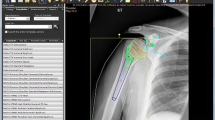Summary
Congenital and acquired conditions presenting with leg length discrepancy, leg deformity or short stature are not only a challenge for paediatric orthopaedic surgeons in terms of treatment options but may also involve a number of medical specialties due to the complex clinical manifestations of the diseases. Various surgical treatment options are available for these rare genetic diseases, including bone lengthening and growth inhibition techniques for lower limb discrepancy, as well as guided growth and other surgical procedures for correction of angular deformities. Surgical techniques may be similar, but the treatment plans and specific multidisciplinary approaches may differ. The present report is focused on paediatric orthopaedic and multidisciplinary aspects of the treatment of rare bone diseases. We address the clinical presentation of these diseases, gait and surgical procedures for conditions such as achondroplasia, X‑linked hypophosphatemia and osteogenesis imperfecta. We also provide a short overview of other rare bone diseases.
Zusammenfassung
Angeborene und erworbene Erkrankungen mit Beinlängendifferenzen, Beindeformitäten oder Kleinwuchs stellen nicht nur eine Herausforderung für Kinderorthopäden dar, sondern können aufgrund der oft komplexen klinischen Manifestationen auch die Expertise verschiedener Fachgebiete erfordern. Verschiedene chirurgische Behandlungsoptionen stehen für diese seltenen Erkrankungen zur Verfügung, darunter Techniken zur Knochenverlängerung und Wachstumshemmung bei Längendiskrepanzen der unteren Extremitäten sowie Wachstumslenkung und invasivere chirurgische Verfahren zur Korrektur von Achsdeformitäten. Die verwendeten Operationstechniken werden entsprechend der knöchernen Deformität, nach Patientenalter, der Grunderkrankung und weiteren Faktoren gewählt. Diese seltenen Knochenerkrankungen verbindet jedoch die Notwendigkeit eines spezifischen multidisziplinären Behandlungsmodus. Die vorliegende Arbeit konzentriert sich auf pädiatrisch-orthopädische und multidisziplinäre Aspekte der Behandlung seltener Knochenerkrankungen. Klinische Manifestation, Gangbild und chirurgische Optionen bei Erkrankungen wie Achondroplasie, X‑chromosomaler Hypophosphatämie und Osteogenesis imperfecta werden dargestellt. Zusätzlich wird ein kurzer Überblick über weitere seltene Knochenerkrankungen gegeben, welche eines multidisziplinären Settings bedürfen.



Similar content being viewed by others
References
Gordon JE, Davis LE. Leg Length Discrepancy: The Natural History (And What Do We Really Know). J Pediatr Orthop. 2019;39(6):S10–3.
Stevens PM, Klatt JB. Guided growth for pathological physes: radiographic improvement during realignment. J Pediatr Orthop. 2008;28(6):632–9.
Ilizarov GA. Clinical application of the tension-stress effect for limb lengthening. Clin Orthop Relat Res. 1990;250:8–26.
Iobst CA. New technologies in pediatric deformity correction. Orthop Clin North Am. 2019;50(1):77–85.
Inan M, Thacker M, Church C, Miller F, Mackenzie WG, Conklin D. Dynamic lower extremity alignment in children with achondroplasia. J Pediatr Orthop. 2006;26(4):526–9.
Sims DT, Burden A, Payton C, Onambélé-Pearson GL, Morse CI. A quantitative description of self-selected walking in adults with Achondroplasia using the gait profile score. Gait Posture. 2019;68:150–4.
Schiedel F, Rödl R. Lower limb lengthening in patients with disproportionate short stature with achondroplasia: a systematic review of the last 20 years. Disabil Rehabil. 2012;34(12):982–7.
Peretti G, Memeo A, Paronzini A, Marzorati S. Staged lengthening in the prevention of dwarfism in achondroplastic children: a preliminary report. J Pediatr Orthop B. 1995;4(1):58–64.
Ginebreda I, Campillo-Recio D, Cárdenas C, Tapiolas J, Rovira P, Isart A. Surgical technique and outcomes for bilateral humeral lengthening for achondroplasia: 26-year experience. Musculoskelet Surg. 2019;103(3):257–62.
Paley D, Bhatnagar J, Herzenberg JE, Bhave A. New procedures for tightening knee collateral ligaments in conjunction with knee realignment osteotomy. Orthop Clin North Am. 1994;25(3):533–55.
Kim RH, Scuderi GR, Dennis DA, Nakano SW. Technical challenges of total knee arthroplasty in skeletal dysplasia. Clin Orthop Relat Res. 2011;469(1):69–75.
Patel H, Cichos KH, Moon AS, McGwin G, Ponce BA, Ghanem ES. Patients with musculoskeletal dysplasia undergoing total joint arthroplasty are at increased risk of surgical site Infection. Orthop Traumatol Surg Res. 2019;105(7):1297–301.
Haldar R, Ambesh P, Kaushal A. Anesthesia for an achondroplastic individual with coexisting atlantoaxial dislocation. Anesth Essays Res. 2015;9(3):443.
Saint-Laurent C, Garde-Etayo L, Gouze E. Obesity in achondroplasia patients: from evidence to medical monitoring. Orphanet J Rare Dis. 2019;14(1):253.
Raimann A, Mindler GT, Kocijan R, Bekes K, Zwerina J, Haeusler G, et al. Multidisciplinary patient care in X‑linked hypophosphatemic rickets: one challenge, many perspectives. Wien Med Wochenschr. 2020;170(5-6):116–23.
Skrinar A, Dvorak-Ewell M, Evins A, Macica C, Linglart A, Imel EA, et al. The lifelong impact of X‑linked hypophosphatemia: results from a burden of disease survey. J Endocr Soc. 2019;3(7):1321–34.
Mindler GT, Kranzl A, Stauffer A, Haeusler G, Ganger R, Raimann A. Disease-specific gait deviations in pediatric patients with X‑linked hypophosphatemia. Gait Posture. 2020;81:78–84.
Steele A, Gonzalez R, Garbalosa JC, Steigbigel K, Grgurich T, Parisi EJ, et al. Osteoarthritis, osteophytes, and enthesophytes affect biomechanical function in adults with X‑linked hypophosphatemia. J Clin Endocrinol Metab. 2020;105(4):1798–814.
Mills ES, Iorio L, Feinn RS, Duignan KM, Macica CM. Joint replacement in X‑linked hypophosphatemia. J Orthop. 2019;16:55–60.
Imel EA, Glorieux FH, Whyte MP, Munns CF, Ward LM, Nilsson O, et al. Burosumab versus conventional therapy in children with X‑linked hypophosphataemia: a randomised, active-controlled, open-label, phase 3 trial. Lancet. 2019;393(10189):2416–27.
Forlino A, Marini JC. Osteogenesis imperfecta. Lancet. 2016;387(10028):1657–71.
Garman CR, Graf A, Krzak J, Caudill A, Smith P, Harris G. Gait deviations in children with osteogenesis Imperfecta type i. J Pediatr Orthop. 2019;39(8):e641–e6.
Wirth T. The orthopaedic management of long bone deformities in genetically and acquired generalized bone weakening conditions. J Child Orthop. 2019;13(1):12–21.
Roberts TT, Cepela DJ, Uhl RL, Lozman J. Orthopaedic considerations for the adult with osteogenesis imperfecta. J Am Acad Orthop Surg. 2016;24(5):298–308.
Author information
Authors and Affiliations
Contributions
All authors contributed to this review article. Gabriel T. Mindler and Rudolf Ganger had the idea for the article, Gabriel T. Mindler and Alexandra Stauffer performed the literature search and drafted the manuscript. Rudolf Ganger critically revised the work.
Corresponding author
Ethics declarations
Conflict of interest
G.T. Mindler and A. Stauffer declare that they have no competing interests. R. Ganger reports personal fees from Smith & Nephew Europe and personal fees from Nuvasive Inc., outside the submitted work.
Additional information
Publisher’s Note
Springer Nature remains neutral with regard to jurisdictional claims in published maps and institutional affiliations.
Rights and permissions
About this article
Cite this article
Mindler, G.T., Stauffer, A. & Ganger, R. Leg lengthening and deformity correction in rare bone diseases: a multidisciplinary approach. Wien Med Wochenschr 171, 126–132 (2021). https://doi.org/10.1007/s10354-020-00805-7
Received:
Accepted:
Published:
Issue Date:
DOI: https://doi.org/10.1007/s10354-020-00805-7




